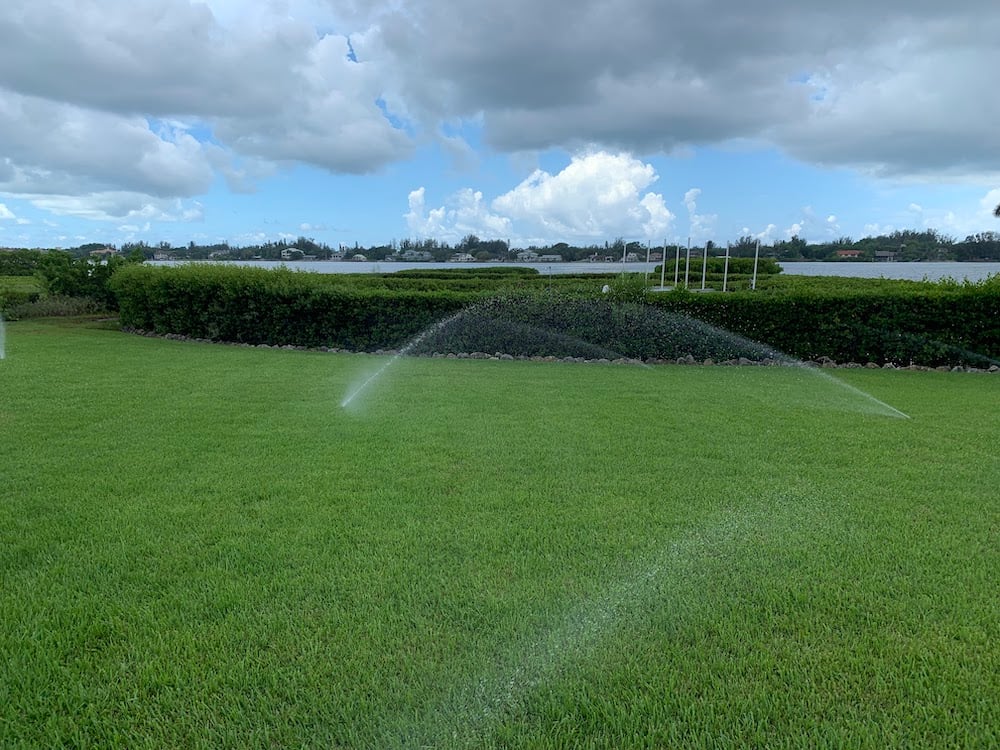
The Best Grass Type for Sandy Soil
Want to see a mysterious magic trick?
Water your grass here in Sarasota. Then watch while— poof — the water immediately disappears!
OK, so it’s not that mysterious. It’s because our soil here is basically sand. And water drains right through sand, much faster than it drains through other types of soil.
What to do about it? What’s the best grass for sandy soil?
You don’t think we’re going to tell you right here, do you? It’s a magic trick! There’s a bit of cape waving and suspense.
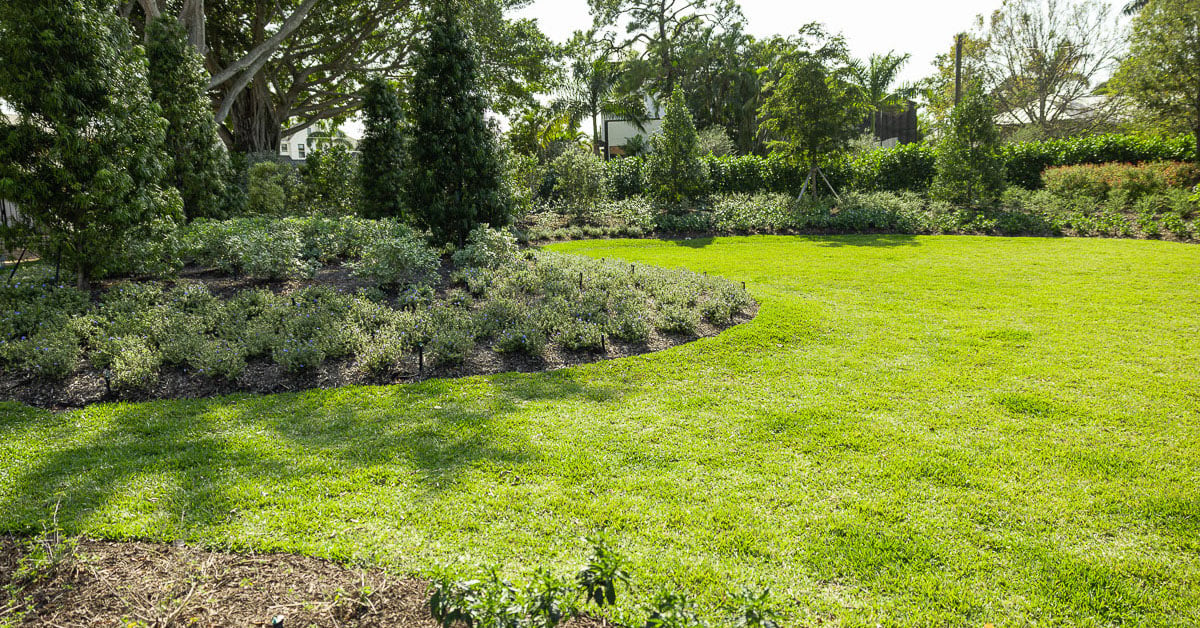
Keep reading, and all will be revealed…
Grass for Sandy Soil: St Augustine
St. Augustine is the top grass for sandy soil, which is why you see it all over the place here in Sarasota. A thick, dark green grass with broad, flat blades, it’s the most popular grass in Florida.
If you have full sun all day, go with St. Augustine Floratam.
It’s the oldest St. Augustine cultivar, so it’s proven itself over time.
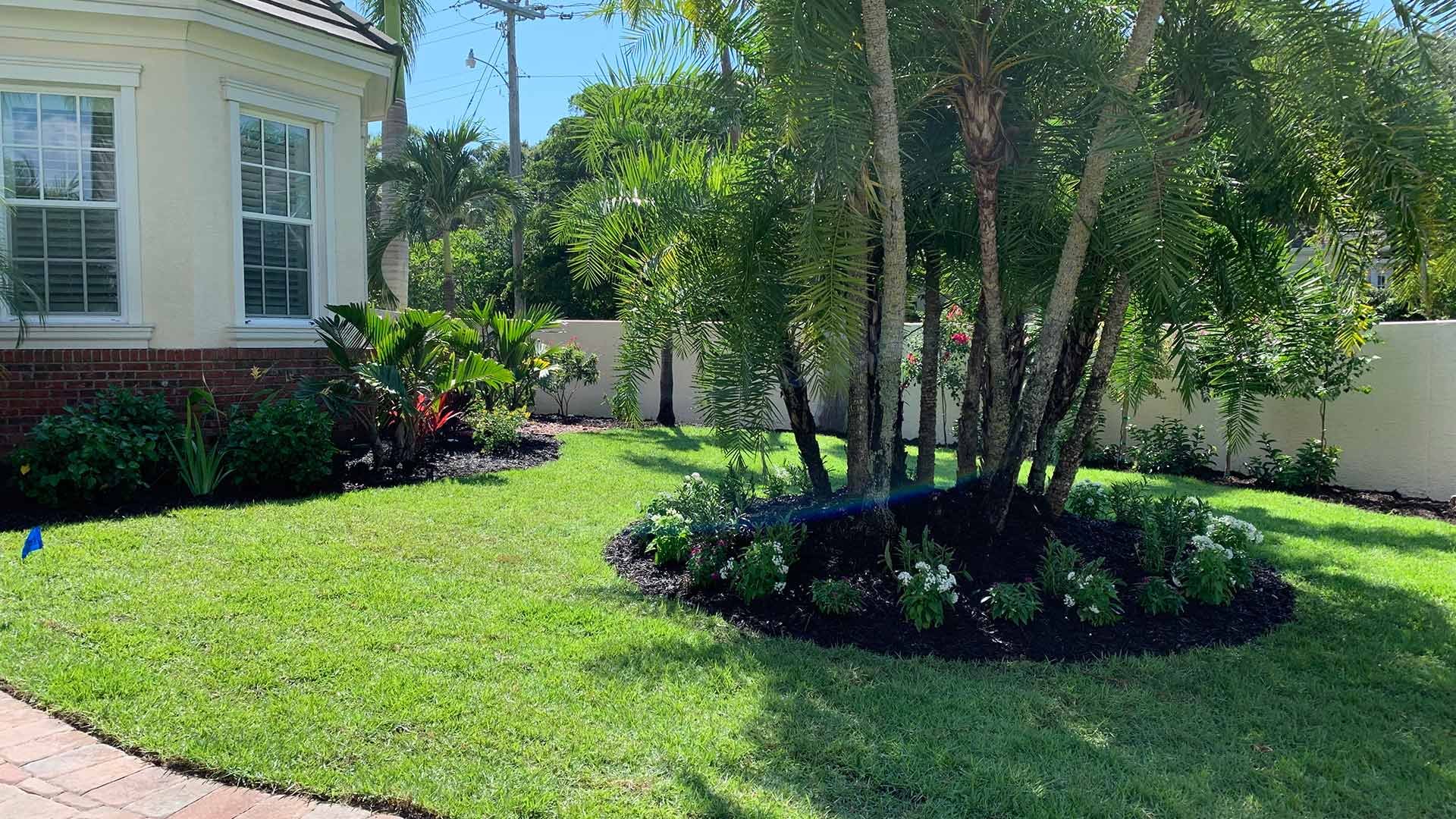
Sure, it has occasional issues with chinch bugs or fungus, but because it’s been around for so long, lawn care companies have perfected their turf programs to deal with its little quirks.
If your lawn is shadier, St. Augustine is still your best grass for sandy soil, but opt for a different variety, like Bitter Blue or CitraBlue.
These varieties look a lot like Floratam, but with a deeper blue color.
They won’t thrive in deep shade, but they’re both shade tolerant.
Why Is St. Augustine a Good Sandy Soil Grass?
St. Augustine actually prefers sandy, well-drained soil. It needs plenty of oxygen to thrive, so it wouldn’t be happy in a more compact soil.
Second Choice Sandy Soil Grass: ‘Empire’ Zoysia
You’ll probably have mixed feelings about Zoysia. Here’s why:
It looks amazing here in Sarasota June through September. It’s a very happy summer grass, thriving on heat and humidity and putting on a beautiful green show.
Then, uh oh.
It hates the cold (doesn’t every Florida dweller?) so once the temperature takes a dip it goes dormant, taking on a brownish hue. Not great.
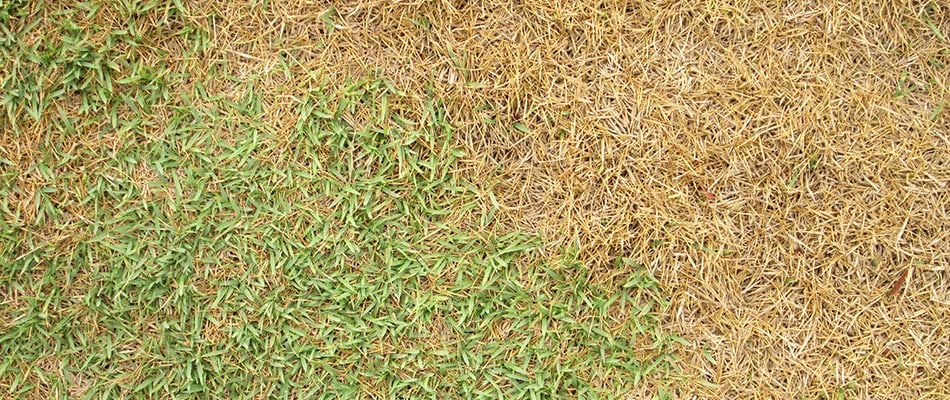
Tips for Watering Sandy Soil Grass
Pouring water on sandy soil grass is like pouring money into your boat: where the heck did it go? Why does it just disappear? It’s sad, we know.
So you need to water less at a time, but more frequently.
Here’s your goal: three watering sessions each week, either from rain or irrigation, of at least one inch of water.
We know what you’re thinking: what about watering restrictions? They don’t allow three sessions a week! What kind of lame magician is this?!
They do allow more watering, if you’re set up with the right irrigation.
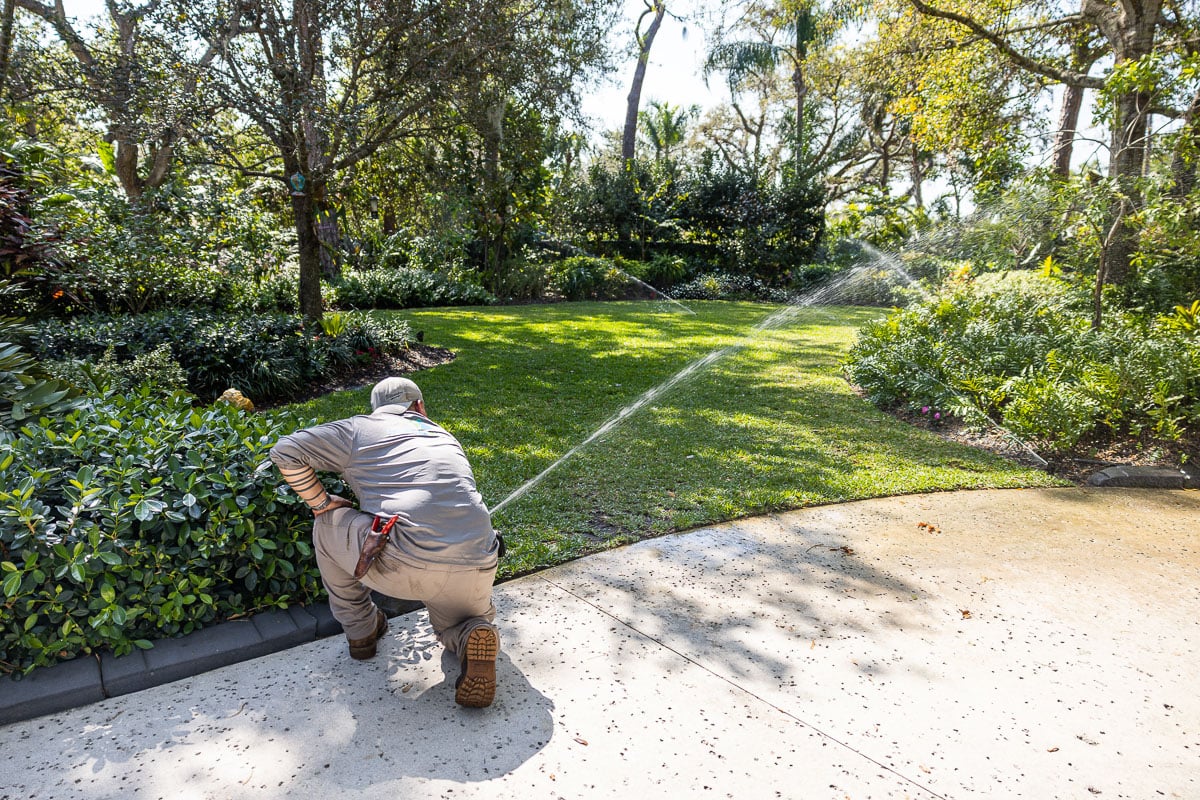
Sarasota watering regulations allow more frequent watering if your irrigation system is equipped with low-volume sprinkler heads, drip irrigation, or if you use reclaimed water.
Drip irrigation isn’t meant for lawns, but it’s great for watering many garden beds.
You can easily upgrade your current irrigation system to low-volume heads.
And your community might already be using reclaimed water, you just don’t know it.
Time to check into a few things.
Fertilizing Sandy Soil Grass
The same thing happens to fertilizer on sandy soil grass as it does with water — the nutrients flow right through, with as much ending up in our groundwater supply as soaking into your lawn’s roots. Not good.
You need to be strategic about fertilizing sandy soil grass, so that doesn’t happen. Your Sarasota lawn needs more frequent fertilizing, but with smaller amounts, so it has a better chance of feeding the roots than draining right through into the groundwater.
The typical lawn care company offers 4-6 fertilizer visits through the year. That’s not enough for sandy soil grass.
Make sure your landscaping company visits more often. Tropical Gardens visits once a month for 8-10 months of the year, applying smaller amounts of nutrients more often so they can really take hold in your sandy soil grass.
It’s sort of like spoon feeding. (If you’re suddenly craving chocolate pudding, sorry.)
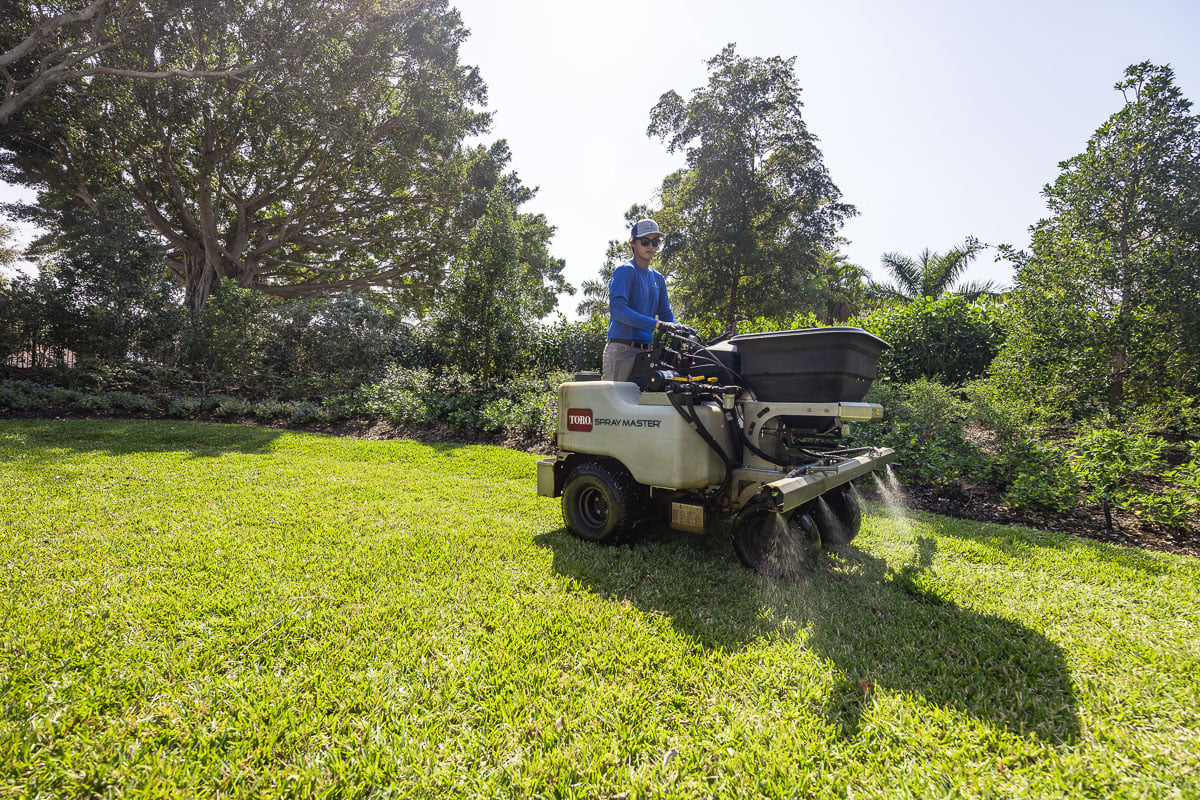
Will Topsoil Help with Sandy Soil Grass?
We know what you’re thinking, again. (It’s magic, remember?)
What if you add two inches of good quality topsoil over the sand? Will that help?
Nope. Sure, it seems like a good idea to give your lawn better soil. But here’s what happens: your lawn’s roots love that nice rich topsoil. You can almost hear them down there yelling, “woo hoo!”
But then the roots stay there, happily hanging out in the top two inches of soil, never reaching down any deeper.
Shallow roots are bad. You want deep roots that are stronger, healthier, and better able to stand up to stress like drought, insects or disease.
Also, sod farms here in Florida grow their sod in sandy soil, so they’re used to it.
If you choose the best grass for sandy soil, and give it smaller, more frequent doses of water and fertilizer, it’ll be just fine.
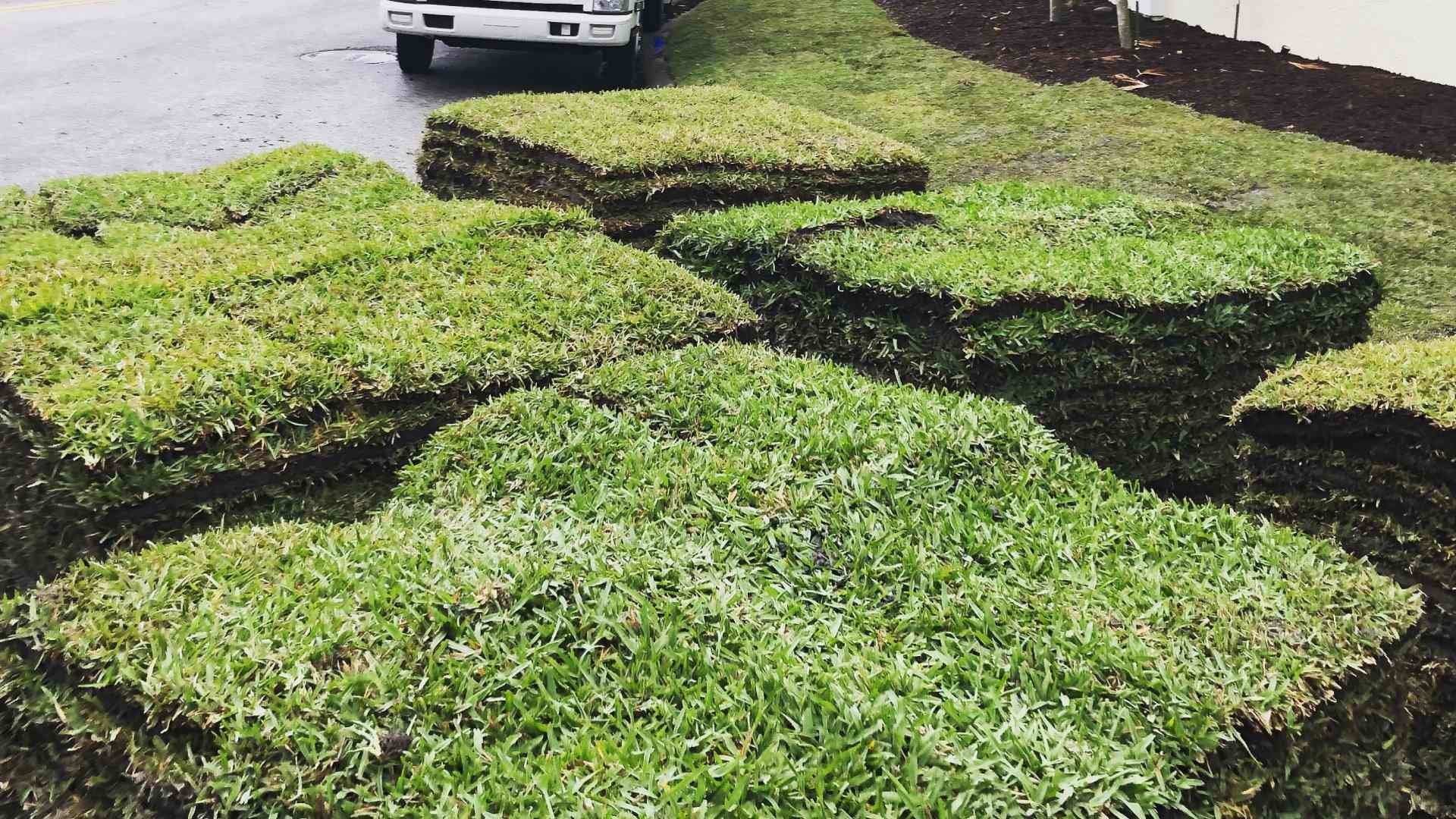
Best Grass for Sandy Soil: Talk to Us
Full disclosure: there’s no magic involved in finding the best grass for sandy soil or encouraging it to thrive.
You just need experts on board who can set you up with the best sandy soil grass, make sure your irrigation can handle its specific water needs, and know how to offer nutrients that go straight to your lawn’s hungry roots.
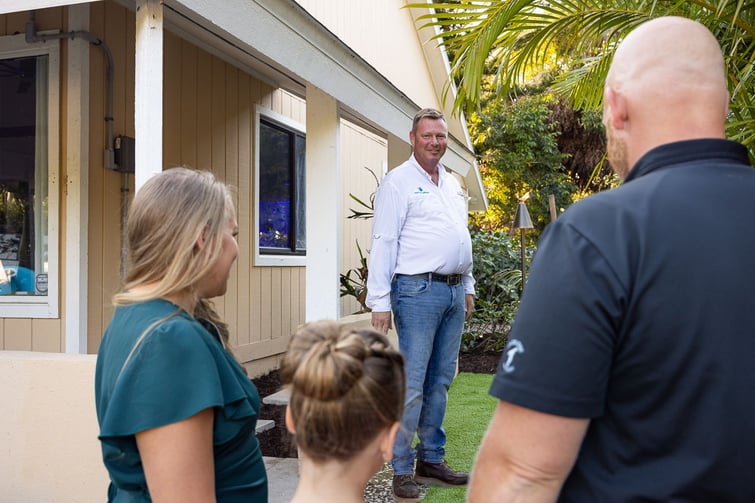
Let’s get started. We’ll help you figure it all out.
Give us a call or fill out our form today! Our team of Sarasota designers can’t wait to design the perfect outdoor haven for your backyard or vacation rental property.


